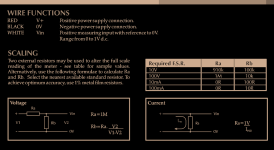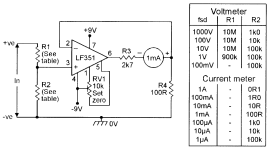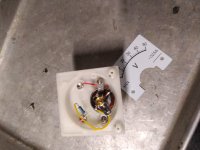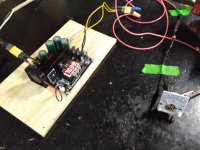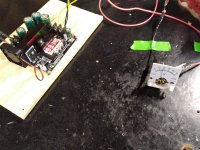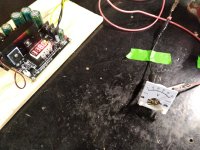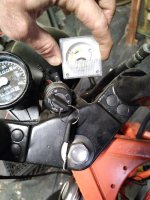Really surprisingly easily!
The two meters I ordered arrived. I should have paid more attention to the listing, they were much smaller than I thought they would be, only a 40mm square display. That's okay, they were dirt cheap and I wanted to just check and see how easy the process was.
I went back to the stackexchange page linked above, where a user helped someone with a formula for changing a voltmeter's deflection (scale) and start voltage. Deflection is determined by total resistance of the circuit. As I expected, since I got a voltmeter with a start voltage of 0V, all I expected to find in the meter would be a coil and a resistor. I wasn't disappointed.
View attachment 351442
Start voltage is easy, just a diode, I got a 68v diode because 2.5v x 28s = 70v. Then my max voltage would be 4.15v x 28s = 116.2v. Theoretically I would also want to know 4.2v x 28s = 117.6v. My desired deflection is then 117.6v-68v, or 49.6v.
Coincidentally, luckily, I randomly selected cheap Aliexpress voltmeters with a range of 50v. Meaning, same deflection. Meaning, I wouldn't need to calculate a new desired deflection, and then order or find resistors to achieve it. I wish I could say I planned it that way, but I didn't.
So, all I needed to do was to test the meter with a diode in series. I got a
boost converter that I'm planning to use as my charger, and yeah, that's it, it worked. Forgive the low quality pictures, but I just adjusted the output voltage from 66-128vdc, and was able to see the needle move and correspond to the correct scale.
View attachment 351445View attachment 351444View attachment 351443
All that's needed is to draw up a piece of paper with a new scale to insert behind the needle instead of 1-50v. And even though the small meter I have would kinda sorta work where I want to mount it on the motorcycle:
View attachment 351446
I'm gonna go ahead and try to find one with a larger, easier-to-read display. I'll still go ahead and modify/mount this one, since I have it and won't take much work at all, and it can be a placeholder until I find a larger meter.
Tl;dr If you want to modify the voltage range of an analog voltmeter, find one that already has the same desired scale that you want, and add a diode. Easy!
You're of course totally right, the 5w ones I got looked small on their own, but they're huge compared to what's in this meter. I'm gonna use them anyway, since I have them, and maybe if/when I find a larger meter the diodes I have to use won't be as oversized in comparison.



